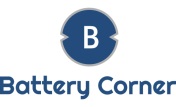|
DC-DC converters accept DC input and provide regulated and/or isolated DC output in various applications including computer flash memory, telecommunications equipment, and process control systems. They are also used frequently on vehicle-mounted systems. Common converter styles include PCB mount, PC board, internal or open frame mount, rack mount, and DIN rail. Choices for nominal DC input for DC-DC converters include 12 VDC, 24 VDC, 48 VDC, 110 VDC, 280 VDC, and 360 VDC. DC output is the most important parameter to consider when searching for DC-DC converters. Common outputs converted include +/- 3.3V, +/- 5V, +/- 12V, +/- 15V, +/- 24V, and +/- 48V. Other performance specifications to consider include output power, line regulation, load regulation, and minimum load. The wattage rating is the total nominal power output of a converter. The line regulation is the percent change in output voltage when VDC input is varied from lowest value to highest value. The load regulation is the maximum steady state amount that the output voltage changes as a result of a specified change in load. Minimum load is specified for the primary output for converter to meet performance specifications. Common user interface options for DC-DC converters include analog front panel, digital front panel, computer interface, parallel interface, and serial interface. Application software may be included for control or monitoring. Display options include analog meter or indicators, digital readouts, and video displays. Common features for DC-DC converters include constant current supply, overvoltage protection, overcurrent protection, short circuit protection, and remote on and off. Constant Current (CC) designs provide an output current that stays constant with changes in load impedance. Overvoltage protection is internal circuitry that limits or shuts down the voltage output in an overvoltage condition. When present, it is most usually found on the primary output. Overcurrent protection is internal circuitry that limits or shuts down the current output in an overcurrent condition. Short circuit protection employs techniques to protect the converter in the event of a short circuit on the load may include electronic current limiting and thermal resets with automatic recovery. Some converters may have the option to turn them on or off remotely. An important environmental parameter to consider when searching for DC-DC converters is the operating temperature. Related keywords: DC DC converter, converter dc dc, DC to DC converter, DC converter, converter dc, DC to DC, charge pump, 12 volt DC power supply, power convertors, 24 volt dc power supply, isolated DC DC converter, DC to DC computer power supply, computer dc dc power supply, 12/24 volt DC/DC converter, 5 dc power supply volt |
|
|



